Sub Pop
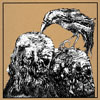 As I watched Throbbing Gristle perform for the first time in over twodecades, many thoughts rushed through my head. The one which is mostrelevant to this review is that I believe the most popular aggressive,noisy acts who get heralded for their "experimentalism" actuallyexploit the most simple tactics. While the audience on the floor wasthrilled to be there, loving every minute of TG's set from the (false!)start, it was the beats that drove them nuts. People love beats andthey love repetition. They love to sing along when they know the wordsthat are coming up and they love to pound fists into the air and dance.Wolf Eyes' signing to Sub Pop isn't all that strange given they'veperhaps got a lot more commercial potential than other friends/comradessuch as Black Dice and Animal Collective, since they embrace beats tosuch a blistering degree. The disc opens with the brief cacophonousintro "Dead in a Boat," an all-out white noise to the wall hate fest,then launches into their feel good hit of the summer, the pouding andpulsing "Stabbed In the Face." After another short beat-less piece, thegroup come back with "Village Oblivia," another fists in the air dancefest. Another brief track bridges the album to the next full-realizedsong, "Rattlesnake Shake," and this time it's as if Wolf Eyes arescoring a brutally vicious nightmare. The low rumble is like anoversized military aircraft piercing the night, eager to unleashdestruction. At high enough volumes I'm sure the hum is enough to shakewax from the ears. Don't expect to be singing along with Wolf Eyestunes easily, however, as the occasional vocal appearances are putthrough the same junk pile of machines that create the rest of thegritty audio sludge on their records. The album sort of ends with thealmost party jam of "Black Vomit." Here, the full, rich sound of noisescoupled with abrasive vocals easily makes nearly every singlepost-post-post-post industrial "musician" (picture black pants withtons of zippers) look like a pussy. Wolf Eyes have done something manybands have tried to achieve but fell short: make something evil enoughto irritate parents (just as soon as they've finally accepted metal andhip hop) and both dirty and sexy enough for the ultimate release.
As I watched Throbbing Gristle perform for the first time in over twodecades, many thoughts rushed through my head. The one which is mostrelevant to this review is that I believe the most popular aggressive,noisy acts who get heralded for their "experimentalism" actuallyexploit the most simple tactics. While the audience on the floor wasthrilled to be there, loving every minute of TG's set from the (false!)start, it was the beats that drove them nuts. People love beats andthey love repetition. They love to sing along when they know the wordsthat are coming up and they love to pound fists into the air and dance.Wolf Eyes' signing to Sub Pop isn't all that strange given they'veperhaps got a lot more commercial potential than other friends/comradessuch as Black Dice and Animal Collective, since they embrace beats tosuch a blistering degree. The disc opens with the brief cacophonousintro "Dead in a Boat," an all-out white noise to the wall hate fest,then launches into their feel good hit of the summer, the pouding andpulsing "Stabbed In the Face." After another short beat-less piece, thegroup come back with "Village Oblivia," another fists in the air dancefest. Another brief track bridges the album to the next full-realizedsong, "Rattlesnake Shake," and this time it's as if Wolf Eyes arescoring a brutally vicious nightmare. The low rumble is like anoversized military aircraft piercing the night, eager to unleashdestruction. At high enough volumes I'm sure the hum is enough to shakewax from the ears. Don't expect to be singing along with Wolf Eyestunes easily, however, as the occasional vocal appearances are putthrough the same junk pile of machines that create the rest of thegritty audio sludge on their records. The album sort of ends with thealmost party jam of "Black Vomit." Here, the full, rich sound of noisescoupled with abrasive vocals easily makes nearly every singlepost-post-post-post industrial "musician" (picture black pants withtons of zippers) look like a pussy. Wolf Eyes have done something manybands have tried to achieve but fell short: make something evil enoughto irritate parents (just as soon as they've finally accepted metal andhip hop) and both dirty and sexy enough for the ultimate release.
 As I watched Throbbing Gristle perform for the first time in over twodecades, many thoughts rushed through my head. The one which is mostrelevant to this review is that I believe the most popular aggressive,noisy acts who get heralded for their "experimentalism" actuallyexploit the most simple tactics. While the audience on the floor wasthrilled to be there, loving every minute of TG's set from the (false!)start, it was the beats that drove them nuts. People love beats andthey love repetition. They love to sing along when they know the wordsthat are coming up and they love to pound fists into the air and dance.Wolf Eyes' signing to Sub Pop isn't all that strange given they'veperhaps got a lot more commercial potential than other friends/comradessuch as Black Dice and Animal Collective, since they embrace beats tosuch a blistering degree. The disc opens with the brief cacophonousintro "Dead in a Boat," an all-out white noise to the wall hate fest,then launches into their feel good hit of the summer, the pouding andpulsing "Stabbed In the Face." After another short beat-less piece, thegroup come back with "Village Oblivia," another fists in the air dancefest. Another brief track bridges the album to the next full-realizedsong, "Rattlesnake Shake," and this time it's as if Wolf Eyes arescoring a brutally vicious nightmare. The low rumble is like anoversized military aircraft piercing the night, eager to unleashdestruction. At high enough volumes I'm sure the hum is enough to shakewax from the ears. Don't expect to be singing along with Wolf Eyestunes easily, however, as the occasional vocal appearances are putthrough the same junk pile of machines that create the rest of thegritty audio sludge on their records. The album sort of ends with thealmost party jam of "Black Vomit." Here, the full, rich sound of noisescoupled with abrasive vocals easily makes nearly every singlepost-post-post-post industrial "musician" (picture black pants withtons of zippers) look like a pussy. Wolf Eyes have done something manybands have tried to achieve but fell short: make something evil enoughto irritate parents (just as soon as they've finally accepted metal andhip hop) and both dirty and sexy enough for the ultimate release.
As I watched Throbbing Gristle perform for the first time in over twodecades, many thoughts rushed through my head. The one which is mostrelevant to this review is that I believe the most popular aggressive,noisy acts who get heralded for their "experimentalism" actuallyexploit the most simple tactics. While the audience on the floor wasthrilled to be there, loving every minute of TG's set from the (false!)start, it was the beats that drove them nuts. People love beats andthey love repetition. They love to sing along when they know the wordsthat are coming up and they love to pound fists into the air and dance.Wolf Eyes' signing to Sub Pop isn't all that strange given they'veperhaps got a lot more commercial potential than other friends/comradessuch as Black Dice and Animal Collective, since they embrace beats tosuch a blistering degree. The disc opens with the brief cacophonousintro "Dead in a Boat," an all-out white noise to the wall hate fest,then launches into their feel good hit of the summer, the pouding andpulsing "Stabbed In the Face." After another short beat-less piece, thegroup come back with "Village Oblivia," another fists in the air dancefest. Another brief track bridges the album to the next full-realizedsong, "Rattlesnake Shake," and this time it's as if Wolf Eyes arescoring a brutally vicious nightmare. The low rumble is like anoversized military aircraft piercing the night, eager to unleashdestruction. At high enough volumes I'm sure the hum is enough to shakewax from the ears. Don't expect to be singing along with Wolf Eyestunes easily, however, as the occasional vocal appearances are putthrough the same junk pile of machines that create the rest of thegritty audio sludge on their records. The album sort of ends with thealmost party jam of "Black Vomit." Here, the full, rich sound of noisescoupled with abrasive vocals easily makes nearly every singlepost-post-post-post industrial "musician" (picture black pants withtons of zippers) look like a pussy. Wolf Eyes have done something manybands have tried to achieve but fell short: make something evil enoughto irritate parents (just as soon as they've finally accepted metal andhip hop) and both dirty and sexy enough for the ultimate release. 

 A kaleidoscope of influences, sounds, languages, and dynamics comprisethe rich set of tools available to New York City's Asobi Seksu. Theband finds themselves awash in this clash of intentions with theability to sort through the competitive and contradictory urges todevelop a consonant sound that is more than the sum of its parts.Singer Yuki Chikudate injects each song with a unique tone, at timesdistinctly assertive or adorably dreamy while oscillating betweenEnglish and Japanese in search of the perfect way to express thefeeling of the song. The band emerges from this melting pot ofattitudes as a less oblique My Bloody Valentine, sharing that group'spenchant for vibrant aural fireworks amidst dreamy melodies. Thesoaring stabs of guitar in "Sooner" demonstrate that this similarity isnot just in the name of the song. The band launches off into those jagswhile managing to weave in a delicate clarity in the verses, the band'sown personality taking hold in these calm breaks from the squalls."Stay" is a slow, aching duet between Yuki and guitarist James Hannathat unfolds itself slowly and methodically. It's an intimate moment ontape as they breathlessly coo amidst a milieu of starry, reverb soakedchords. The pristine manner that makes the song fit for a polite slowdance is dashed away as they guitars begin to climb and blur out into afuzzy wash of vivid sound, amplifying the indistinct intensity of theprivate moment before plummeting back into the grips of sensual acuity."I'm Happy But You Don't Like Me" eschews the dramatics of shoegazingfor a more direct synthesis of contemporary indie rock and Japanesepop. The song doesn't fail to snare the ear, turning the languagebarrier into a weapon against itself as they syllabic melodiescontribute greatly to the song's memorability. Hanna takes the leadvocals on "Let Them Wait" and the album closer, "Before We Fall,"managing to hold his own against Chikudate's relentlessly endearingpresence. The pair of songs make a great case for the viability ofAsobi Seksu, another indicator of the band's ability to approach theirmusic from a number of different angles, dexterously employingvariations on their sound, structure, and delivery to create a productthat is never predictable.
A kaleidoscope of influences, sounds, languages, and dynamics comprisethe rich set of tools available to New York City's Asobi Seksu. Theband finds themselves awash in this clash of intentions with theability to sort through the competitive and contradictory urges todevelop a consonant sound that is more than the sum of its parts.Singer Yuki Chikudate injects each song with a unique tone, at timesdistinctly assertive or adorably dreamy while oscillating betweenEnglish and Japanese in search of the perfect way to express thefeeling of the song. The band emerges from this melting pot ofattitudes as a less oblique My Bloody Valentine, sharing that group'spenchant for vibrant aural fireworks amidst dreamy melodies. Thesoaring stabs of guitar in "Sooner" demonstrate that this similarity isnot just in the name of the song. The band launches off into those jagswhile managing to weave in a delicate clarity in the verses, the band'sown personality taking hold in these calm breaks from the squalls."Stay" is a slow, aching duet between Yuki and guitarist James Hannathat unfolds itself slowly and methodically. It's an intimate moment ontape as they breathlessly coo amidst a milieu of starry, reverb soakedchords. The pristine manner that makes the song fit for a polite slowdance is dashed away as they guitars begin to climb and blur out into afuzzy wash of vivid sound, amplifying the indistinct intensity of theprivate moment before plummeting back into the grips of sensual acuity."I'm Happy But You Don't Like Me" eschews the dramatics of shoegazingfor a more direct synthesis of contemporary indie rock and Japanesepop. The song doesn't fail to snare the ear, turning the languagebarrier into a weapon against itself as they syllabic melodiescontribute greatly to the song's memorability. Hanna takes the leadvocals on "Let Them Wait" and the album closer, "Before We Fall,"managing to hold his own against Chikudate's relentlessly endearingpresence. The pair of songs make a great case for the viability ofAsobi Seksu, another indicator of the band's ability to approach theirmusic from a number of different angles, dexterously employingvariations on their sound, structure, and delivery to create a productthat is never predictable. 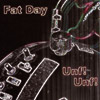 I'm sitting here laughing my ass off at this record. It's 17 minutes,23 tracks in length, completely out of a control, and absolutelyhilarious. I've heard lots of thrash and smash musicians and I enjoy alot of their music, but every record I've heard that is bound anddetermined to rip through thirty songs in under half an hour have acertain attitude that doesn't warrant laughter. Fat Day are a bitdifferent; in between the 20 and 30 second songs on this disc arestrange eight-bit Nintendo sonatas. These little doodles of electronicbuzzery and near-organ origin provide little bits of relief from thedrum-banging, guitar-eating, vocal lacerations that are the rest of thealbum. It is, at times, impossible not to laugh at how silly this allis. Despite the fact that there are five tracks between the openingorgan piece and the second bit of relief on the album, it sounds asthough there is one song playing and it just happens to be riddled withsudden bleats of compositional hyperactivity and vomiting energy. I'mtrying to imagine what this band must look like on stage and all I cansee is the image of a head exploding or a cow being run over by amonster truck. Unf! Unf!isn't a particularly heavy album; there are certainly denser, morerhythmically tight songs out there. Fat Day, however, take that musicalnastiness and transform it into a spurt of energy so outrageous that itcan't be considered anything more than slap-stick. This is massivelyentertaining slap-stick, though. I've listened to this short and sweetrecord about five times in a row now and I haven't gotten sick of it.The honks and squeaks of the organ-like pieces always highlight somekind of insufficiency that reminds me of circus clowns or freak showsand the grating guitar, drum, and voice pieces always rock out in asatisfyingly primal way. I'm not sure how, but some of these tunes havegotten stuck in my head and I find myself half-gyrating in an attemptto reproduce the rhythms and half-melodies on some of the songs. If Ihad the ability to stop smiling and laughing while listening to therecord then I might actually attempt to bark along some of the lyrics,but it's just more fun to sit back and watch the insanity progress allby itself. -
I'm sitting here laughing my ass off at this record. It's 17 minutes,23 tracks in length, completely out of a control, and absolutelyhilarious. I've heard lots of thrash and smash musicians and I enjoy alot of their music, but every record I've heard that is bound anddetermined to rip through thirty songs in under half an hour have acertain attitude that doesn't warrant laughter. Fat Day are a bitdifferent; in between the 20 and 30 second songs on this disc arestrange eight-bit Nintendo sonatas. These little doodles of electronicbuzzery and near-organ origin provide little bits of relief from thedrum-banging, guitar-eating, vocal lacerations that are the rest of thealbum. It is, at times, impossible not to laugh at how silly this allis. Despite the fact that there are five tracks between the openingorgan piece and the second bit of relief on the album, it sounds asthough there is one song playing and it just happens to be riddled withsudden bleats of compositional hyperactivity and vomiting energy. I'mtrying to imagine what this band must look like on stage and all I cansee is the image of a head exploding or a cow being run over by amonster truck. Unf! Unf!isn't a particularly heavy album; there are certainly denser, morerhythmically tight songs out there. Fat Day, however, take that musicalnastiness and transform it into a spurt of energy so outrageous that itcan't be considered anything more than slap-stick. This is massivelyentertaining slap-stick, though. I've listened to this short and sweetrecord about five times in a row now and I haven't gotten sick of it.The honks and squeaks of the organ-like pieces always highlight somekind of insufficiency that reminds me of circus clowns or freak showsand the grating guitar, drum, and voice pieces always rock out in asatisfyingly primal way. I'm not sure how, but some of these tunes havegotten stuck in my head and I find myself half-gyrating in an attemptto reproduce the rhythms and half-melodies on some of the songs. If Ihad the ability to stop smiling and laughing while listening to therecord then I might actually attempt to bark along some of the lyrics,but it's just more fun to sit back and watch the insanity progress allby itself. - 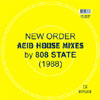 Don't be fooled by the appearance of New Order nor the word "mixes" inthe title of this record. These are essentially two reinterpretationsof two of New Order's most important songs "Confusion" and "BlueMonday" by fellow Mancunians 808 State. What could easily be correct onthe cover, however, is that these date back to 1988, a time in which808 State was synching their Roland 808, 909 and 303 together, lettingthe machines take center stage. As far as my ears can tell, there areabsolutely no sounds from New Order's recording used in the process,and that's probably a good thing, as the songs have been remixed andremixed and remixed and remixed to the point of violent nausea. 808State's versions to me sound like cover tunes, where Graham Massey andcompany are practicing with equipment or approaches that were new tothem after years of playing rock music as Biting Tongues. There's acouple possible reasons these didn't surface on a widescale levelsixteen years ago: the group might not have been confident enough withthe recordings at the time; New Order's international stardom couldhave demanded much more money than 808 State could afford; the vocalsmight not have been quite what the 12" acid house market demanded (that"yeah" sample in "Blue Monday" and the "Confusion" sample both grate onthe nerves after a few minutes); or there was already a saturatedmarket of New Order remixes kicking around. Now, sixteen years later,the songs are certainly more "vintage" (or as LCD Soundsytem would putit "borrowed nostalgia for the unremembered 80s"). Both versions arepure and blissful, with a bare minimal amount of vocals included. Theybear little resemblance to the original versions, aside fromrecognizable bass lines, and act as a strong precursor to the nextvault release of 808 State on Rephlex, Prebuild, (a collection of the songs which pre-date Newbuild). For people expecting the wailing sax and melodic mastery from albums like Ninety and Ex:el,this 12" will probably be a disappointment, but for those looking forhynotic acid house techno and don't mind New Order will probably find amild amount of joy within the grooves.
Don't be fooled by the appearance of New Order nor the word "mixes" inthe title of this record. These are essentially two reinterpretationsof two of New Order's most important songs "Confusion" and "BlueMonday" by fellow Mancunians 808 State. What could easily be correct onthe cover, however, is that these date back to 1988, a time in which808 State was synching their Roland 808, 909 and 303 together, lettingthe machines take center stage. As far as my ears can tell, there areabsolutely no sounds from New Order's recording used in the process,and that's probably a good thing, as the songs have been remixed andremixed and remixed and remixed to the point of violent nausea. 808State's versions to me sound like cover tunes, where Graham Massey andcompany are practicing with equipment or approaches that were new tothem after years of playing rock music as Biting Tongues. There's acouple possible reasons these didn't surface on a widescale levelsixteen years ago: the group might not have been confident enough withthe recordings at the time; New Order's international stardom couldhave demanded much more money than 808 State could afford; the vocalsmight not have been quite what the 12" acid house market demanded (that"yeah" sample in "Blue Monday" and the "Confusion" sample both grate onthe nerves after a few minutes); or there was already a saturatedmarket of New Order remixes kicking around. Now, sixteen years later,the songs are certainly more "vintage" (or as LCD Soundsytem would putit "borrowed nostalgia for the unremembered 80s"). Both versions arepure and blissful, with a bare minimal amount of vocals included. Theybear little resemblance to the original versions, aside fromrecognizable bass lines, and act as a strong precursor to the nextvault release of 808 State on Rephlex, Prebuild, (a collection of the songs which pre-date Newbuild). For people expecting the wailing sax and melodic mastery from albums like Ninety and Ex:el,this 12" will probably be a disappointment, but for those looking forhynotic acid house techno and don't mind New Order will probably find amild amount of joy within the grooves. K.U.D.O. from Unkle, Kan Takagi of Major Force and Yoshimi P-We of TheBoredoms/OOIOO together make up J.O.Y., the group behind this eccentricnew single on DFA. J.O.Y.'s "Sunplus" is a percussive samba danceexcursion, a wacked-out psychedelic version of the theme song to George of the Jungle.Sharing the brightly-colored, hyperkinetic qualities of J-Pop superstargroup Puffy AmiYumi, J.O.Y. incorporate a dizzying assemblage ofeclectic instrumentation—xylophones, steel drum, synthesized handclapsand a room full of bells and percussion—to achieve their unique sound."Sunplus" would not sound out of place on Yamatsuka Eye'sshort-attention-span DJ Pica Pica Pica mix CD, with its hyperactiveatmosphere and manic rhythms. DFA's remix takes up Side B of this 45RPM single, brilliantly reworking the song into a more jagged,aggressive dance-punk track. By filtering out some of the anarchicclatter of J.O.Y.'s original, Murphy and Goldsworthy streamline thetrack and add some forward momentum, highlighting Yoshimi's punkishvocals and upping the cowbell quotient by several degrees. Togetherwith the earlier EYE Remix of Black Dice's "Endless Happiness" (on theB-Side of the Cone Toaster single), DFA has put out some of the most joyously unclassifiable Japanese experimental pop since Asa Chang & Junray's Song Chang.
K.U.D.O. from Unkle, Kan Takagi of Major Force and Yoshimi P-We of TheBoredoms/OOIOO together make up J.O.Y., the group behind this eccentricnew single on DFA. J.O.Y.'s "Sunplus" is a percussive samba danceexcursion, a wacked-out psychedelic version of the theme song to George of the Jungle.Sharing the brightly-colored, hyperkinetic qualities of J-Pop superstargroup Puffy AmiYumi, J.O.Y. incorporate a dizzying assemblage ofeclectic instrumentation—xylophones, steel drum, synthesized handclapsand a room full of bells and percussion—to achieve their unique sound."Sunplus" would not sound out of place on Yamatsuka Eye'sshort-attention-span DJ Pica Pica Pica mix CD, with its hyperactiveatmosphere and manic rhythms. DFA's remix takes up Side B of this 45RPM single, brilliantly reworking the song into a more jagged,aggressive dance-punk track. By filtering out some of the anarchicclatter of J.O.Y.'s original, Murphy and Goldsworthy streamline thetrack and add some forward momentum, highlighting Yoshimi's punkishvocals and upping the cowbell quotient by several degrees. Togetherwith the earlier EYE Remix of Black Dice's "Endless Happiness" (on theB-Side of the Cone Toaster single), DFA has put out some of the most joyously unclassifiable Japanese experimental pop since Asa Chang & Junray's Song Chang. 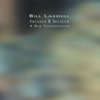 Focus and cocentration are absolutely essential to this album. Withoutthose two features, all of these songs would've probably turned outlike the ones on Aftermathematics Instrumental.The ingredients on this record are simple, though: heavy and wavingbass melodies, steady percussion, and a just hint of the sexual. Anoverwhelming sense of dark, seductive power hovers over Version 2 Versionthe instant the bass drops on "Dystopia" and it only intensifies until"Night City" and "System Malfunction" close the record up. The music isfairly inconspicuous so far as dub is concerned, but the atmoshphericsthat Laswell and company manage to pull out of their instruments areastounding. "Babylon Site" not only struts along as though it wereuntouchable and utterly of another world, it also rings and pulses withthe soul of ease and promiscuity. The sexual references can't behelped; I half expect that this album was recorded in a dark and dampbasement to the images of lusty encounter. Hi-hats chirp and stutterwith the silk playing of electric guitars and classic dub sounds.There's enough reverb and echo on most of these songs to send any soberlistener into a realm of cosmic light shows and slow motion existence.The gritty sounds that are coaxed out of the instruments and the almosttoo pure stream of sound effects make an otherwise typical dub recordsound exceptional. There's nothing but pure, throbbing tones on thisrecord with occaisional use of a bouncing keyboard or a guitar moaningitself to death. The sparse use of tabla rhythms and vocal effects helpkeep the mood of the record unpredictable. When "Night City" and itsspazzed out rhythm section blew up at the end of "Babylon Site," I wasthoroughly surprised. I'm not talking about a huge jump stylistically,but Laswell tweaked the mood just enough to keep me listening throughthe record. The sci-fi closer is a gem of groove production. "SystemMalfunction" rolls along like a steam train powered by the heart andsoul of reggae and hot summer nights. Instead of trying to do athousand things at once and make every song significantly differentfrom one another, Laswell has kept things tight and uniform. The resultis an album a hundred times better than the last one I listened to fromhim.
Focus and cocentration are absolutely essential to this album. Withoutthose two features, all of these songs would've probably turned outlike the ones on Aftermathematics Instrumental.The ingredients on this record are simple, though: heavy and wavingbass melodies, steady percussion, and a just hint of the sexual. Anoverwhelming sense of dark, seductive power hovers over Version 2 Versionthe instant the bass drops on "Dystopia" and it only intensifies until"Night City" and "System Malfunction" close the record up. The music isfairly inconspicuous so far as dub is concerned, but the atmoshphericsthat Laswell and company manage to pull out of their instruments areastounding. "Babylon Site" not only struts along as though it wereuntouchable and utterly of another world, it also rings and pulses withthe soul of ease and promiscuity. The sexual references can't behelped; I half expect that this album was recorded in a dark and dampbasement to the images of lusty encounter. Hi-hats chirp and stutterwith the silk playing of electric guitars and classic dub sounds.There's enough reverb and echo on most of these songs to send any soberlistener into a realm of cosmic light shows and slow motion existence.The gritty sounds that are coaxed out of the instruments and the almosttoo pure stream of sound effects make an otherwise typical dub recordsound exceptional. There's nothing but pure, throbbing tones on thisrecord with occaisional use of a bouncing keyboard or a guitar moaningitself to death. The sparse use of tabla rhythms and vocal effects helpkeep the mood of the record unpredictable. When "Night City" and itsspazzed out rhythm section blew up at the end of "Babylon Site," I wasthoroughly surprised. I'm not talking about a huge jump stylistically,but Laswell tweaked the mood just enough to keep me listening throughthe record. The sci-fi closer is a gem of groove production. "SystemMalfunction" rolls along like a steam train powered by the heart andsoul of reggae and hot summer nights. Instead of trying to do athousand things at once and make every song significantly differentfrom one another, Laswell has kept things tight and uniform. The resultis an album a hundred times better than the last one I listened to fromhim.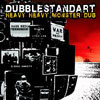 Despite the increasingly dangerous political climate in today's world,especially George W. Bush's America, the majority of major label andunderground acts seem almost universally mired down in creatingmeaningless yet pleasant noise with a groovy beat, catchy vocal hook,or some other attractive characteristic. Altogether rejecting thepowerful crosscultural tradition of music as social megaphone, musichas turned its back on not only history but the present and future aswell. With only a select few independent acts expressing their outrageor concern via creative means, those of us yearning for something witha message often have to look far and wide for something even remotelyaddressing national/international crises and controversies that trulymatter. While 'Heavy Heavy Monster Dub' may not be the most potent cryfor social change, that it takes time even referring to the issues is awelcome break from ignorance and apathy. Musically, the group's"positive" sound is refreshing and forward-thinking, with livedowntempo breaks and programmed loops acting as backbeat to instrumentsboth traditional and synthesized. Adorning their tracks with thoughtfuland provocative names ("Evil Empire" and "Preempive Dub", to name afew) in the footsteps of experimental peers Muslimgauze or Richard H.Kirk, Austrian dub lovers Dubblestandart try to use their time toconvey alternative ideas and promote futher exploration andinvestigation on the part of the listener. "Streets Of Dub" opens thealbum with an Eastern introduction that quickly meets with ahead-nodding rhythm, funky bass guitar line, and carefully placedvocals from Camel. The title track benefits from contributions from dublegends Sly & Robbie and Dillinger, balancing time-honored Jamaicanelements with loungey Viennese house beats. Two more remixes of itappear on the album, from Dreadzone and Nick Manasseh respectively,each one pulling their favorite parts together to create two vastlydifferent versions. Mikey Dread and Sonic Colin lend their voices tothe funky "Dub Is The Roots," though the Mad Professor mix sounds farmore bright and crisp for some reason. Keith LeBlanc's mix of"Terrorists & Inhalers" is more orthodox than most of the cutshere, as is to be expected from this On-U Sound and Tack>>Headveteran, though it still benefits from a few sonic twists and tweaks.Camel reappears towards the end, contributing cautionary vocals to"Watch The Future", an atmospheric delectation with an infectious beatand uplifting melodies and flourishes. Arguably the best new dub albumthat has come across my desk this year, those of you on the proper"wavelength" or who still haven't ventured beyond The Bug or, dare Isay, Bob Marley should seek this one out.
Despite the increasingly dangerous political climate in today's world,especially George W. Bush's America, the majority of major label andunderground acts seem almost universally mired down in creatingmeaningless yet pleasant noise with a groovy beat, catchy vocal hook,or some other attractive characteristic. Altogether rejecting thepowerful crosscultural tradition of music as social megaphone, musichas turned its back on not only history but the present and future aswell. With only a select few independent acts expressing their outrageor concern via creative means, those of us yearning for something witha message often have to look far and wide for something even remotelyaddressing national/international crises and controversies that trulymatter. While 'Heavy Heavy Monster Dub' may not be the most potent cryfor social change, that it takes time even referring to the issues is awelcome break from ignorance and apathy. Musically, the group's"positive" sound is refreshing and forward-thinking, with livedowntempo breaks and programmed loops acting as backbeat to instrumentsboth traditional and synthesized. Adorning their tracks with thoughtfuland provocative names ("Evil Empire" and "Preempive Dub", to name afew) in the footsteps of experimental peers Muslimgauze or Richard H.Kirk, Austrian dub lovers Dubblestandart try to use their time toconvey alternative ideas and promote futher exploration andinvestigation on the part of the listener. "Streets Of Dub" opens thealbum with an Eastern introduction that quickly meets with ahead-nodding rhythm, funky bass guitar line, and carefully placedvocals from Camel. The title track benefits from contributions from dublegends Sly & Robbie and Dillinger, balancing time-honored Jamaicanelements with loungey Viennese house beats. Two more remixes of itappear on the album, from Dreadzone and Nick Manasseh respectively,each one pulling their favorite parts together to create two vastlydifferent versions. Mikey Dread and Sonic Colin lend their voices tothe funky "Dub Is The Roots," though the Mad Professor mix sounds farmore bright and crisp for some reason. Keith LeBlanc's mix of"Terrorists & Inhalers" is more orthodox than most of the cutshere, as is to be expected from this On-U Sound and Tack>>Headveteran, though it still benefits from a few sonic twists and tweaks.Camel reappears towards the end, contributing cautionary vocals to"Watch The Future", an atmospheric delectation with an infectious beatand uplifting melodies and flourishes. Arguably the best new dub albumthat has come across my desk this year, those of you on the proper"wavelength" or who still haven't ventured beyond The Bug or, dare Isay, Bob Marley should seek this one out. The Dutch collective known for their anarchist/punk-based, communal, and musical style mishmoshing tendencies blast out a powerful two-LP/CD set of all new material. Engineered once again by Steve Albini in Chicago, Turn could easily be the strongest album of the year. In the three years since their last full-length recording, Dizzy Spells, the Ex have kept busy touring places on this planet most people would be afraid to go, making a few ATP appearances, collaborating on more In the Fishtank recordings, and working in various combinations on other peoples records.
The Dutch collective known for their anarchist/punk-based, communal, and musical style mishmoshing tendencies blast out a powerful two-LP/CD set of all new material. Engineered once again by Steve Albini in Chicago, Turn could easily be the strongest album of the year. In the three years since their last full-length recording, Dizzy Spells, the Ex have kept busy touring places on this planet most people would be afraid to go, making a few ATP appearances, collaborating on more In the Fishtank recordings, and working in various combinations on other peoples records.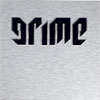 We need another forced dance music sub-genre like we need more ironicmullets. Rephlex's press for this compilation talks valiantly about howit's just the music and not the labels to which we should be payingattention, but then it goes and hypes this new style dance music hybridcalled "Grime". Grime to me would indicate a real layer of dirt,menace, or sonic or thematic depravity, but none of that is to be foundin these polished dancefloor stompers that bridge the artificial gapsbetween electro, drum n bass, garage and just about every other clubmusic popular in the last five years. The fact that some of this stufflike MarkOne's "Raindance" is pretty catchy as far as club music goesis overshadowed by the presentation and the conceit that this is a newscene and new sound to be gobbled up before it's past its prime. Imean, isn't that the general modus operandi of nearly all dance music?Every innovation and genre splice is just a way to keep peoplelistening to what are otherwise thousands of tons of vinyl that isproduced with a strict formula in mind. Grimeis most certainly meant for the dancefloor as it lacks the variationand depth of contemporary electronic listening music. The patterns andrepetition are designed to make people move, and move they will untilenough records within this tempo range with these kinds of trademarkscome out. After that, we'll get a new bin in the DJ stores for"Post-Grime" or something. The problem with this record to me is thatit purports to pioneer something, but there's nothing here that wouldsound fresh to anyone but the most ardent genre-hound. It's music madefor a select audience, and in that I'm sure it succeeds as theproducers here prove they have plenty of chops for creating bouncybreakbeats and thumping bass. However, I find it unlikely that Grimewill interest anyone outside of the stuffy world of snotty DJ circlesand trendy club kids. It certainly didn't do much for me.
We need another forced dance music sub-genre like we need more ironicmullets. Rephlex's press for this compilation talks valiantly about howit's just the music and not the labels to which we should be payingattention, but then it goes and hypes this new style dance music hybridcalled "Grime". Grime to me would indicate a real layer of dirt,menace, or sonic or thematic depravity, but none of that is to be foundin these polished dancefloor stompers that bridge the artificial gapsbetween electro, drum n bass, garage and just about every other clubmusic popular in the last five years. The fact that some of this stufflike MarkOne's "Raindance" is pretty catchy as far as club music goesis overshadowed by the presentation and the conceit that this is a newscene and new sound to be gobbled up before it's past its prime. Imean, isn't that the general modus operandi of nearly all dance music?Every innovation and genre splice is just a way to keep peoplelistening to what are otherwise thousands of tons of vinyl that isproduced with a strict formula in mind. Grimeis most certainly meant for the dancefloor as it lacks the variationand depth of contemporary electronic listening music. The patterns andrepetition are designed to make people move, and move they will untilenough records within this tempo range with these kinds of trademarkscome out. After that, we'll get a new bin in the DJ stores for"Post-Grime" or something. The problem with this record to me is thatit purports to pioneer something, but there's nothing here that wouldsound fresh to anyone but the most ardent genre-hound. It's music madefor a select audience, and in that I'm sure it succeeds as theproducers here prove they have plenty of chops for creating bouncybreakbeats and thumping bass. However, I find it unlikely that Grimewill interest anyone outside of the stuffy world of snotty DJ circlesand trendy club kids. It certainly didn't do much for me. 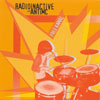 Hip-hop records live and die by their MCs. A DJ can cut as crazy as hewants and a producer can mine the weirdest record bins this side of themoon but if the MC isn't solid, the record will fall flat.Unfortunately, that's what happens for this ambitious work fromRadioinactive and Antimc. While the music is quirky, unpredictable andsufficiently groovy, the vocals just do not work for me. This is moreof that self-described 'art rap' that mixes stiff rhymes and heady freeverse with off-beat production and live instrumentation, and while someof it is fun, this just isn't. Fans of similar Mush artists will likelyenjoy Radioinactive's flow, but the too-direct, too-choppy,too-preachy, too-simple rhymes often come off as amateurish andill-performed. Spitting out words over a beat is an art, and one that'sa lot harder to do well than most people seem to think. While some ofRadioinactive's contemporaries have an off-kilter delivery that worksbecause it's strange and fresh, most of Free Kamalreminds me of one of those files you might find online of a kid rappinginto a webcam. If Mush had gone the Cex/Dr. Octagon/Cannibal Ox routeof releasing an instrumental and vocal copy of Free Kamal, I'm sure I'd pop it in more often, but as it stands, the record has a fatal flaw that I just can't get past to enjoy.
Hip-hop records live and die by their MCs. A DJ can cut as crazy as hewants and a producer can mine the weirdest record bins this side of themoon but if the MC isn't solid, the record will fall flat.Unfortunately, that's what happens for this ambitious work fromRadioinactive and Antimc. While the music is quirky, unpredictable andsufficiently groovy, the vocals just do not work for me. This is moreof that self-described 'art rap' that mixes stiff rhymes and heady freeverse with off-beat production and live instrumentation, and while someof it is fun, this just isn't. Fans of similar Mush artists will likelyenjoy Radioinactive's flow, but the too-direct, too-choppy,too-preachy, too-simple rhymes often come off as amateurish andill-performed. Spitting out words over a beat is an art, and one that'sa lot harder to do well than most people seem to think. While some ofRadioinactive's contemporaries have an off-kilter delivery that worksbecause it's strange and fresh, most of Free Kamalreminds me of one of those files you might find online of a kid rappinginto a webcam. If Mush had gone the Cex/Dr. Octagon/Cannibal Ox routeof releasing an instrumental and vocal copy of Free Kamal, I'm sure I'd pop it in more often, but as it stands, the record has a fatal flaw that I just can't get past to enjoy.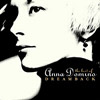 This collection proves that Best Of is truly a relative term. In the case of Anna Domino (nee' Anne Taylor), the term is relative to the generally poor quality of her tired, continental pop. So, Best Of need not necessarily indicate quality in and of itself. And if the songs on Dreamback are indeed the cream of Anna Domino's extensive back catalog, I think I can safely steer clear of her albums.
This collection proves that Best Of is truly a relative term. In the case of Anna Domino (nee' Anne Taylor), the term is relative to the generally poor quality of her tired, continental pop. So, Best Of need not necessarily indicate quality in and of itself. And if the songs on Dreamback are indeed the cream of Anna Domino's extensive back catalog, I think I can safely steer clear of her albums. If Belgian group Bernthøler are remembered at all, they are rememberedfor their classic 1984 single "My Suitor," a cello-driven slice ofsweetly downbeat chamber pop. It was a favorite of legendary BBC radioDJ John Peel, and became a cult underground hit for the Brusselsquartet. They released a couple subsequent singles that failed to makewaves, committed some demo tracks to tape and disbanded in 1985. Lapdissolve two decades later, and LTM has put together a definitivecollection of this all-but-forgotten band. Comprising the completestudio recordings of the band, released and unreleased, Merry Lines in the Skyalso includes three Quicktime videos, including one for "My Suitor."I've listened to the disc a couple of times through now, and havestruggled for something positive to say about the rest of Bernthøler 'smaterial. Unfortunately, it seems that success and longevity eludedBernthøler as a direct consequence of the quality of their music, andnot by some cruel accident of fate. Where "My Suitor" succeeds becauseof its minimal arrangements and Albanian-born singer Drita Kotaji'ssoftly expressive couplets, the rest of the tracks collected here failto distinguish themselves at all. This is not to say that Bernthølerare utterly devoid of talent; merely that they rather unremarkablyapproximate the "coldwave" sound of their contemporaries, echoed byother bands like The Cure and Antena. Kotaji's tuneless vocals franklybecome a little grating over the course of the disc, and theoversimplified arrangements often work to the detriment of the songs.Many of these tracks seem underwritten and stunted, suffering from apaucity of ideas, interesting as fragments but ultimately notcompelling. For those who remember "My Suitor" fondly and haven't beenable to find any of the compilations on which it has appeared over theyears, you could probably do worse than dropping a ten-pound note topurchase Merry Lines, and it's possible you might find the other 14 tracks pleasant. Just don't expect to uncover some unjustly obscure gem.
If Belgian group Bernthøler are remembered at all, they are rememberedfor their classic 1984 single "My Suitor," a cello-driven slice ofsweetly downbeat chamber pop. It was a favorite of legendary BBC radioDJ John Peel, and became a cult underground hit for the Brusselsquartet. They released a couple subsequent singles that failed to makewaves, committed some demo tracks to tape and disbanded in 1985. Lapdissolve two decades later, and LTM has put together a definitivecollection of this all-but-forgotten band. Comprising the completestudio recordings of the band, released and unreleased, Merry Lines in the Skyalso includes three Quicktime videos, including one for "My Suitor."I've listened to the disc a couple of times through now, and havestruggled for something positive to say about the rest of Bernthøler 'smaterial. Unfortunately, it seems that success and longevity eludedBernthøler as a direct consequence of the quality of their music, andnot by some cruel accident of fate. Where "My Suitor" succeeds becauseof its minimal arrangements and Albanian-born singer Drita Kotaji'ssoftly expressive couplets, the rest of the tracks collected here failto distinguish themselves at all. This is not to say that Bernthølerare utterly devoid of talent; merely that they rather unremarkablyapproximate the "coldwave" sound of their contemporaries, echoed byother bands like The Cure and Antena. Kotaji's tuneless vocals franklybecome a little grating over the course of the disc, and theoversimplified arrangements often work to the detriment of the songs.Many of these tracks seem underwritten and stunted, suffering from apaucity of ideas, interesting as fragments but ultimately notcompelling. For those who remember "My Suitor" fondly and haven't beenable to find any of the compilations on which it has appeared over theyears, you could probably do worse than dropping a ten-pound note topurchase Merry Lines, and it's possible you might find the other 14 tracks pleasant. Just don't expect to uncover some unjustly obscure gem.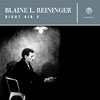 The songs on Night Air 2evoke the experience of walking across wet cobblestones slick withrain, ducking under awnings of sidewalk cafes and antiquarianbookstores, aimless and anonymous in an unfamiliar city at night.Blaine L. Reininger, a native of Colorado who has lived in Europe sincethe early 1980s, draws heavily upon his expatriate sense ofisolation—geographic, linguistic and emotional—to create an articulatesuite of mature pop songs. Most will know Reininger from his more than20-year stint as frontman for the intermittently brilliant groupTuxedomoon, creators of Half-Mute, Desire and handful ofessential art-punk classics. In the long gaps between the group'speriods of activity, Reininger has pursued a fruitful solo career,releasing a string of baroque pop albums highlighting his talent as amulti-instrumentalist and witty lyricist. This album is billed as asequel to 1984's Night Air, but that's a bit misleading, as itwould be more aptly described as a best-of, consisting of 15hand-picked tracks from albums and soundtracks recorded between 1989and 1999. All of this material has been available previously, but invery rare pressings on Belgium's Crepuscule and other small Europeanlabels. As he has done on so many Tuxedomoon releases, Reininger playsviolin and viola throughout Night Air 2, building each songfrom multi-tracked layers of dark, swooning strings. The rest of thesound is filled out with an assortment of synthesizers, keyboards andrhythm boxes, adding up to an urbane, metropolitan sound that matchesthe sophistication of a Stan Ridgeway or Gavin Friday, with its ownunique Kafka-esque atmospheres. Reininger is fascinated by the noirexpressionism of Fritz Lang films and Fritz Bleyl woodcuts, and hisparanoid, cinematic atmospheres perfectly capture this zeitgeist. Attimes, the swirl of overlapping strings resembles the sound of aone-man chamber quartet covering Anton Karas' soundtrack to The Third Man.I've heard other modern versions of this noir sound—I'm thinking of themusic of Barry Adamson and Goldfrapp—but Reininger's approach has theworldly appeal and poise of a veteran. The thick, textural glissandi of"Night Ride" careen down dimly lit nocturnal boulevards, carriedforward by propulsive keyboards. "Winter in Wien" is the first of athree-part song suite entitled "Europe After the Rains," a sentimentalhomage to Max Ernst which doubles as an atmospheric meditation on theprofound sense of history the solitary traveler experiences in oldEurope. The songs switch freely between spoken-work beatnik recitationsand refrains sung in English or French. Night Air 2 displays anintelligence and elegance so rare in modern pop music that at firstlisten it seems entirely foreign, but is all the more welcome for it.
The songs on Night Air 2evoke the experience of walking across wet cobblestones slick withrain, ducking under awnings of sidewalk cafes and antiquarianbookstores, aimless and anonymous in an unfamiliar city at night.Blaine L. Reininger, a native of Colorado who has lived in Europe sincethe early 1980s, draws heavily upon his expatriate sense ofisolation—geographic, linguistic and emotional—to create an articulatesuite of mature pop songs. Most will know Reininger from his more than20-year stint as frontman for the intermittently brilliant groupTuxedomoon, creators of Half-Mute, Desire and handful ofessential art-punk classics. In the long gaps between the group'speriods of activity, Reininger has pursued a fruitful solo career,releasing a string of baroque pop albums highlighting his talent as amulti-instrumentalist and witty lyricist. This album is billed as asequel to 1984's Night Air, but that's a bit misleading, as itwould be more aptly described as a best-of, consisting of 15hand-picked tracks from albums and soundtracks recorded between 1989and 1999. All of this material has been available previously, but invery rare pressings on Belgium's Crepuscule and other small Europeanlabels. As he has done on so many Tuxedomoon releases, Reininger playsviolin and viola throughout Night Air 2, building each songfrom multi-tracked layers of dark, swooning strings. The rest of thesound is filled out with an assortment of synthesizers, keyboards andrhythm boxes, adding up to an urbane, metropolitan sound that matchesthe sophistication of a Stan Ridgeway or Gavin Friday, with its ownunique Kafka-esque atmospheres. Reininger is fascinated by the noirexpressionism of Fritz Lang films and Fritz Bleyl woodcuts, and hisparanoid, cinematic atmospheres perfectly capture this zeitgeist. Attimes, the swirl of overlapping strings resembles the sound of aone-man chamber quartet covering Anton Karas' soundtrack to The Third Man.I've heard other modern versions of this noir sound—I'm thinking of themusic of Barry Adamson and Goldfrapp—but Reininger's approach has theworldly appeal and poise of a veteran. The thick, textural glissandi of"Night Ride" careen down dimly lit nocturnal boulevards, carriedforward by propulsive keyboards. "Winter in Wien" is the first of athree-part song suite entitled "Europe After the Rains," a sentimentalhomage to Max Ernst which doubles as an atmospheric meditation on theprofound sense of history the solitary traveler experiences in oldEurope. The songs switch freely between spoken-work beatnik recitationsand refrains sung in English or French. Night Air 2 displays anintelligence and elegance so rare in modern pop music that at firstlisten it seems entirely foreign, but is all the more welcome for it.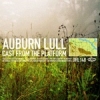 After releasing their acclaimed debut album in 1999, it was abundantlyclear that Auburn Lull have a firm grasp on the finer points ofshoegazer space rock, and their music holds a power that they alonecontrol and wield, letting it out in beautiful doses and specimens thatcan cause the heart and brain to swell. For their new album, they chosenot to branch out a great deal and keep the formula somewhat constant —not a bad thing but a firm limitation that has the potential toadversely affect the proceedings. There is growth in the band both asmusicians and songwriters, and it should not be said that the music isstagnating within this structure. However, at times on this album itfeels like the band is simply repeating themselves, working from acomfortable base but then not expounding. Some chances might be nice tohear, but ultimately the album is a satisfying one in many areas. Evensomething quite simple like the blending of songs from one into thenext is handled with an almost medical precision, and the mood nevershifts abruptly to jar one from the state of consciousness that isdeveloped. The echoes that are captured on these songs are those ofaching hearts and starving minds, of people miles apart though right inthe same room together, of flighty concepts of things in the walls andthe way things ought to be. Simple melodies and trickery abound, withsamples and echoed percussion joined by droned guitars and simple notesplucked and repeated. Atmosphere is key, as each song is practicallydrenched in the weight of a place and time as well as a feeling orwords. "Season of False Starts" illustrates this pursuit perfectly withbuild upon build, then, appropriately, false starts and stops, thevoice ghostly rendering the words "decades fall apart," among otherthings. It's almost like the music of lessons or voices from beyond thegrave will use, old Hamlet lecturing his son and saying "do notforget." While the album feels like they're referring to themselves,they also touch something far deeper within, and in those moments theyapproach the next stage in their evolution.
After releasing their acclaimed debut album in 1999, it was abundantlyclear that Auburn Lull have a firm grasp on the finer points ofshoegazer space rock, and their music holds a power that they alonecontrol and wield, letting it out in beautiful doses and specimens thatcan cause the heart and brain to swell. For their new album, they chosenot to branch out a great deal and keep the formula somewhat constant —not a bad thing but a firm limitation that has the potential toadversely affect the proceedings. There is growth in the band both asmusicians and songwriters, and it should not be said that the music isstagnating within this structure. However, at times on this album itfeels like the band is simply repeating themselves, working from acomfortable base but then not expounding. Some chances might be nice tohear, but ultimately the album is a satisfying one in many areas. Evensomething quite simple like the blending of songs from one into thenext is handled with an almost medical precision, and the mood nevershifts abruptly to jar one from the state of consciousness that isdeveloped. The echoes that are captured on these songs are those ofaching hearts and starving minds, of people miles apart though right inthe same room together, of flighty concepts of things in the walls andthe way things ought to be. Simple melodies and trickery abound, withsamples and echoed percussion joined by droned guitars and simple notesplucked and repeated. Atmosphere is key, as each song is practicallydrenched in the weight of a place and time as well as a feeling orwords. "Season of False Starts" illustrates this pursuit perfectly withbuild upon build, then, appropriately, false starts and stops, thevoice ghostly rendering the words "decades fall apart," among otherthings. It's almost like the music of lessons or voices from beyond thegrave will use, old Hamlet lecturing his son and saying "do notforget." While the album feels like they're referring to themselves,they also touch something far deeper within, and in those moments theyapproach the next stage in their evolution.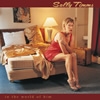 The covers record is a grand art form, often abused, but with a conceptlike this one there's no way to go wrong. Sally Timms' latest soloalbum is primarily comprised of songs written by men, hence the title,and with anyone else some of the material might come off a bit tooforced. Timms takes these songs and, to her credit, does not change anywords or situations in the songs to make them work from a woman'sperspective. These performances are the original songs in newarrangements, brought about by Timms and the engineering/productionteam of Johnny Dowd and Justin Asher. The emphasis is on raw, however,with songs sometimes reduced in parts to just Timms' voice, aforeboding and sensuous being all its own. She has chosen some ratherinteresting specimens to emulate, from her other band the Mekons toMark Eitzel to Ryan Adams, and each interpretation bears a stamp thatwill never wash off in my mind. This makes it impossible to listen tothe original song without thinking of Timms' rendition, a testament toher artistry and originality when the tunes aren't even hers to beginwith. The two Mekons songs are especially moving, as her interpretationis informed by something deeper, so any changes could imply thatperhaps this is the way Timms always wanted the song to go; though theMekons are along for the ride, providing the music. Most of all, thisis a solo album of striking variation, with revealing and incrediblyprovocative imagery. The instrumentation involved alone is a wild ride,from musical saw to accordion to moog bass to strightforward guitar anddrums. Programming by Asher is never tiresome, and Timms' voice risingfrom a whisper to a plaintive wail and filling the room with nakedemotion is purely goosebump-inducing. By the time "Little Tommy Tucker"takes the speakers, I'm spent, and it's almost the bedtime story I needto fall asleep. It would be, that is, if it weren't so completelymesmerizing, with her frightening "none shall be married" refrainrepeating in my head so vividly that I may never sleep again.
The covers record is a grand art form, often abused, but with a conceptlike this one there's no way to go wrong. Sally Timms' latest soloalbum is primarily comprised of songs written by men, hence the title,and with anyone else some of the material might come off a bit tooforced. Timms takes these songs and, to her credit, does not change anywords or situations in the songs to make them work from a woman'sperspective. These performances are the original songs in newarrangements, brought about by Timms and the engineering/productionteam of Johnny Dowd and Justin Asher. The emphasis is on raw, however,with songs sometimes reduced in parts to just Timms' voice, aforeboding and sensuous being all its own. She has chosen some ratherinteresting specimens to emulate, from her other band the Mekons toMark Eitzel to Ryan Adams, and each interpretation bears a stamp thatwill never wash off in my mind. This makes it impossible to listen tothe original song without thinking of Timms' rendition, a testament toher artistry and originality when the tunes aren't even hers to beginwith. The two Mekons songs are especially moving, as her interpretationis informed by something deeper, so any changes could imply thatperhaps this is the way Timms always wanted the song to go; though theMekons are along for the ride, providing the music. Most of all, thisis a solo album of striking variation, with revealing and incrediblyprovocative imagery. The instrumentation involved alone is a wild ride,from musical saw to accordion to moog bass to strightforward guitar anddrums. Programming by Asher is never tiresome, and Timms' voice risingfrom a whisper to a plaintive wail and filling the room with nakedemotion is purely goosebump-inducing. By the time "Little Tommy Tucker"takes the speakers, I'm spent, and it's almost the bedtime story I needto fall asleep. It would be, that is, if it weren't so completelymesmerizing, with her frightening "none shall be married" refrainrepeating in my head so vividly that I may never sleep again.  Whimsy and fantasy are all it takes for Chris Barth to make a goodalbum. The lyrics on the album don't always make sense, but sometimesthey have a familiar sentiment that conjure up memories and ideas aboutthe world that might otherwise be forgotten. The whole of this recordworks like this: Barth's voice takes front and center on nearly everytrack and it is a gorgeous voice capable of both distress and relief.The music, when it isn't just an acoustic guitar, rolls along like agarage band trying to feel out its new equipment and this childlikeclumsiness is what marks the best songs on the album. In the meantimeBarth speaks out lyrics like "I'm gonna watch my baby trees grow / Overthe next fifty years I hope / I should have known I would hurt you likethat / I'll bet the farm I won't make it home." Not exactly the stuffof Byron or Whitman, but it's the way that he sings that makes thelyrics so important; it is as though they were written to fit aroundthe music and were not so much drawn up to convey deep, personalconvictions. The music, as a whole, is simplistic with arrangementsthat play on the addition of instruments in just the right place. "OurPlace in the Sky" is just a popping guitar rhythm with Barth's voicehighlighting the accents until a bass guitar begins to wrap all therhythm into a tide of melody and completes the song. "Watching YourHouse Burn" is a slow rhythmic intensification that pulses with all thereverb of layered acoustic guitars and the uneasy rumbling of drummachines. The opening lines, "I got poems on my shelf / I pick one offand raise a spell," are the epitome of the album and mark theprogression of this song and others. As the acoustic guitar races alongwith Barth's voice a tension is developed that relieves itself in thesound a heavy, thumping bass and the echo of a simple and repeatedlyrical theme. Most of these songs clock in at the two minute mark, butone outstanding and instrumental exception is "Sun Enters Capricorn."Whether or not the album's lyrics are completely convincing or even ifthey were just built around the songs after they were developed, Born a Black Diamondas a deliciously mystical aura. The guitar wailing and phased nuanceson "Sun Enters Capricorn" wobble and tumble like a living creature inits death throes. The drums on this track are noticeably heaviercompared to others and everything after this song seems to emanate outof this song, as though it were the most important piece. "The Balladof Normanoak" closes the album on a solemn and reverent note, as thoughthe music was all devoted to the mythical character of Normanoak. Afuzzed-out guitar makes its presence known between Barth's pained voiceand the light plucking of an acoustic melody. "Normanoak, Normanoak /You touched me, you let out some smoke / Oh it goes, oh it goes" andthe story (pointless? epic? nonsensical pseudo-myth?) ends.
Whimsy and fantasy are all it takes for Chris Barth to make a goodalbum. The lyrics on the album don't always make sense, but sometimesthey have a familiar sentiment that conjure up memories and ideas aboutthe world that might otherwise be forgotten. The whole of this recordworks like this: Barth's voice takes front and center on nearly everytrack and it is a gorgeous voice capable of both distress and relief.The music, when it isn't just an acoustic guitar, rolls along like agarage band trying to feel out its new equipment and this childlikeclumsiness is what marks the best songs on the album. In the meantimeBarth speaks out lyrics like "I'm gonna watch my baby trees grow / Overthe next fifty years I hope / I should have known I would hurt you likethat / I'll bet the farm I won't make it home." Not exactly the stuffof Byron or Whitman, but it's the way that he sings that makes thelyrics so important; it is as though they were written to fit aroundthe music and were not so much drawn up to convey deep, personalconvictions. The music, as a whole, is simplistic with arrangementsthat play on the addition of instruments in just the right place. "OurPlace in the Sky" is just a popping guitar rhythm with Barth's voicehighlighting the accents until a bass guitar begins to wrap all therhythm into a tide of melody and completes the song. "Watching YourHouse Burn" is a slow rhythmic intensification that pulses with all thereverb of layered acoustic guitars and the uneasy rumbling of drummachines. The opening lines, "I got poems on my shelf / I pick one offand raise a spell," are the epitome of the album and mark theprogression of this song and others. As the acoustic guitar races alongwith Barth's voice a tension is developed that relieves itself in thesound a heavy, thumping bass and the echo of a simple and repeatedlyrical theme. Most of these songs clock in at the two minute mark, butone outstanding and instrumental exception is "Sun Enters Capricorn."Whether or not the album's lyrics are completely convincing or even ifthey were just built around the songs after they were developed, Born a Black Diamondas a deliciously mystical aura. The guitar wailing and phased nuanceson "Sun Enters Capricorn" wobble and tumble like a living creature inits death throes. The drums on this track are noticeably heaviercompared to others and everything after this song seems to emanate outof this song, as though it were the most important piece. "The Balladof Normanoak" closes the album on a solemn and reverent note, as thoughthe music was all devoted to the mythical character of Normanoak. Afuzzed-out guitar makes its presence known between Barth's pained voiceand the light plucking of an acoustic melody. "Normanoak, Normanoak /You touched me, you let out some smoke / Oh it goes, oh it goes" andthe story (pointless? epic? nonsensical pseudo-myth?) ends.  As a drummer, I'm always fascinated when electronic/studio-basedprojects take to the road with extra musicians in tow; the humanelement provided to make the live shows a lot more exciting.Performances augmented by a live drummer, guitarist, etc. interactingwith pre-set samples and loops adds a new dimension to thecompositions, blending organic rhythms and tones with digitallyprocessed signals. The outcome generally takes the music to a whole newlevel and is, of course, much more interesting to watch than someoneconstantly keeping busy behind a mixing desk while note-for-noterenditions play out. For their latest release as the Two LoneSwordsmen, the dynamic studio duo of Andrew Weatherall and KeithTenniswood have tracked the bulk of their tunes with the live groupapproach. From the Double Gone Chapelhas the guys using four separate drummers throughout to hook their rawbass lines and overdriven synths on. They proceed to layer upon theirvarious rhythm sections for some novel, dark and sexy tracks. Thehalf-time squelching keyboard groove of "Stack Up" opens up the discfor distorted, dental drill-like whirs which weave through the soundsof a digital beach shore. The steady pulses of the guitar percussive"Formica Fuego" and sliding down-tuned bass of "The Lurch" back a mixof post-punk and new wave which should crowd the dance floor of anyretroesque club under its black lights and darkly attired patrons. Inkeeping with that particular timeframe, a distorted cover of Gun Club's"Sex Beat" appears early on in the mix; tight performance andinstrumentation but doesn't do too much for me. The lilting noisescape"Punches and Knives" and dirty shuffle of "Kamanda's Response" croonwith twisted lyrics and vocals which conjure up visions of a modern daySyd Barrett curled up in the corner of a dark smoke-filled studio.Having not followed the Two Lone Swordsmen too closely since their 2000release Tiny Reminders, I wouldn't have expected such an impressive mix of live, laid back tracks on From the Double Gone Chapelby comparison. Then again, there's only so many ways to use the studioas an instrument without filling it with musicians to play into theether.
As a drummer, I'm always fascinated when electronic/studio-basedprojects take to the road with extra musicians in tow; the humanelement provided to make the live shows a lot more exciting.Performances augmented by a live drummer, guitarist, etc. interactingwith pre-set samples and loops adds a new dimension to thecompositions, blending organic rhythms and tones with digitallyprocessed signals. The outcome generally takes the music to a whole newlevel and is, of course, much more interesting to watch than someoneconstantly keeping busy behind a mixing desk while note-for-noterenditions play out. For their latest release as the Two LoneSwordsmen, the dynamic studio duo of Andrew Weatherall and KeithTenniswood have tracked the bulk of their tunes with the live groupapproach. From the Double Gone Chapelhas the guys using four separate drummers throughout to hook their rawbass lines and overdriven synths on. They proceed to layer upon theirvarious rhythm sections for some novel, dark and sexy tracks. Thehalf-time squelching keyboard groove of "Stack Up" opens up the discfor distorted, dental drill-like whirs which weave through the soundsof a digital beach shore. The steady pulses of the guitar percussive"Formica Fuego" and sliding down-tuned bass of "The Lurch" back a mixof post-punk and new wave which should crowd the dance floor of anyretroesque club under its black lights and darkly attired patrons. Inkeeping with that particular timeframe, a distorted cover of Gun Club's"Sex Beat" appears early on in the mix; tight performance andinstrumentation but doesn't do too much for me. The lilting noisescape"Punches and Knives" and dirty shuffle of "Kamanda's Response" croonwith twisted lyrics and vocals which conjure up visions of a modern daySyd Barrett curled up in the corner of a dark smoke-filled studio.Having not followed the Two Lone Swordsmen too closely since their 2000release Tiny Reminders, I wouldn't have expected such an impressive mix of live, laid back tracks on From the Double Gone Chapelby comparison. Then again, there's only so many ways to use the studioas an instrument without filling it with musicians to play into theether.  Instrumental hip-hop and I have a rocky relationship, but it's one thatThe Opus is working to mend. Mush has lined up a steady stream of myfavorite releases over the last year, and Breathing Lessonsdefinitely falls into the stack of things I've listened to more thananything else lately. Whispering voices and moody ambient loops lieunder the beats for most of Breathing Lessons giving the recorda kind of hip hop-noir feel not unlike the old Wordsound and Asphodelreleases that first pulled me into the world of instrumental andexperimental hip hop. This record is so solidly constructed that Idon't even mind that it nicks the "Give me love so that I can kill"sample already used to perfection by Meat Beat Manifesto. The guestvocal by Lord 360 on "Isis" is intelligent and tight; cerebral but witha groove, and groove is what makes most of The Opus' work stand out.The beats are constructed from a classical hip hop paradigm with loopedpatterns of fours and eights, breakdowns, instrument drop-outs, and theoccasional beat-juggling that sounds like it must come from a pair ofturntables (even if it doesn't). Instrumental hip hop can often feellike it's waiting for something, or that it's somehow missing the vocalintended to tie it all together, but that's never a problem for trackslike "Whirlwind-Guardian" or "The Strange Adventures of Mr. Happy,"where the music alone is enough to propel the songs forward. A steadydiet of instrumental hip hop will leave just about anyone thinking thatit all sounds the same, and to be fair, a great deal of it isconstructed from the same sliced up not-so-rare grooves and jazz riffs,but The Opus layers compositions with enough spooky atmosphere, musicalslivers, and finely tuned beats to make a record worth seeking out.
Instrumental hip-hop and I have a rocky relationship, but it's one thatThe Opus is working to mend. Mush has lined up a steady stream of myfavorite releases over the last year, and Breathing Lessonsdefinitely falls into the stack of things I've listened to more thananything else lately. Whispering voices and moody ambient loops lieunder the beats for most of Breathing Lessons giving the recorda kind of hip hop-noir feel not unlike the old Wordsound and Asphodelreleases that first pulled me into the world of instrumental andexperimental hip hop. This record is so solidly constructed that Idon't even mind that it nicks the "Give me love so that I can kill"sample already used to perfection by Meat Beat Manifesto. The guestvocal by Lord 360 on "Isis" is intelligent and tight; cerebral but witha groove, and groove is what makes most of The Opus' work stand out.The beats are constructed from a classical hip hop paradigm with loopedpatterns of fours and eights, breakdowns, instrument drop-outs, and theoccasional beat-juggling that sounds like it must come from a pair ofturntables (even if it doesn't). Instrumental hip hop can often feellike it's waiting for something, or that it's somehow missing the vocalintended to tie it all together, but that's never a problem for trackslike "Whirlwind-Guardian" or "The Strange Adventures of Mr. Happy,"where the music alone is enough to propel the songs forward. A steadydiet of instrumental hip hop will leave just about anyone thinking thatit all sounds the same, and to be fair, a great deal of it isconstructed from the same sliced up not-so-rare grooves and jazz riffs,but The Opus layers compositions with enough spooky atmosphere, musicalslivers, and finely tuned beats to make a record worth seeking out.  Montreal'sArcade Fire is the latest breath of crisp northern air to spark ourheavy brains, and their debut album is a wonderful promulgation ofthoughtful, emotional pop music that is striking in its clarity."Neighborhood #1 (Tunnels)" is an epic opener, so captivating that itmay be some time before a listener can escape it to experience the restof the album. A simple piano melody leads the track, placing its feeton the ground before the crushing crescendo of organs, accordions,guitars, chimes, and synths appears, bursting this love song at theseams. Vocalist Win Butler imbues the song with such fervor, animperative desire that speeds the song along as the drums linkthemselves to the heartbeat, pushing the band to a breathless brink."Neighborhood #2 (Laika)" is a far tighter piece, drawing the scopeinward from the epic sprawl of "Neighborhood #1" to a darker, confinedsound. A lolling accordion and sharp strings punctuate the driftingvocals, almost accusatory in their tone like a Greek chorus deliveringtheir take on the situation from just offstage. The layout of "Laika"is quite clever, tossing new elements and surprising shifts into thesong that make it far more intriguing than any straight ahead design.The Arcade Fire seems comfortable warping song structure to fit theirexpressive needs, and it works well throughout the disc. "Crown ofLove" finds Butler channeling a suicidal Scott Walker, a quiet plea offorgiveness above a restrained orchestral swell, building and buildinguntil the weight becomes too much to bear. As the song closes it eruptsinto a stunning gallop, that hits like a ton of bricks and slowly fadesaway, comfortable departing with that shock still in the air. "Wake Up"aims to rival the Polyphonic Spree when it comes to off-kilter choralacrobatics. While the comparison is initially apt, the song quicklydiscovers its own place, a far less absurdist and far more realistforay into celebration of living, with all its complexities. Themusical background of the song is overwhelming, and far more fullbodied than much of the aforementioned comparison's output. Once again,as soon as the comfort of the musical motif of the song sets in, theband takes a hard turn into sixties girl groups territory, throwing inthe whole wall of sound. Funeral is an exhilarating experience:the debut of a fresh, invigorating band and a batch of songs that willensconce themselves in the hearts and minds of many for years to come.
Montreal'sArcade Fire is the latest breath of crisp northern air to spark ourheavy brains, and their debut album is a wonderful promulgation ofthoughtful, emotional pop music that is striking in its clarity."Neighborhood #1 (Tunnels)" is an epic opener, so captivating that itmay be some time before a listener can escape it to experience the restof the album. A simple piano melody leads the track, placing its feeton the ground before the crushing crescendo of organs, accordions,guitars, chimes, and synths appears, bursting this love song at theseams. Vocalist Win Butler imbues the song with such fervor, animperative desire that speeds the song along as the drums linkthemselves to the heartbeat, pushing the band to a breathless brink."Neighborhood #2 (Laika)" is a far tighter piece, drawing the scopeinward from the epic sprawl of "Neighborhood #1" to a darker, confinedsound. A lolling accordion and sharp strings punctuate the driftingvocals, almost accusatory in their tone like a Greek chorus deliveringtheir take on the situation from just offstage. The layout of "Laika"is quite clever, tossing new elements and surprising shifts into thesong that make it far more intriguing than any straight ahead design.The Arcade Fire seems comfortable warping song structure to fit theirexpressive needs, and it works well throughout the disc. "Crown ofLove" finds Butler channeling a suicidal Scott Walker, a quiet plea offorgiveness above a restrained orchestral swell, building and buildinguntil the weight becomes too much to bear. As the song closes it eruptsinto a stunning gallop, that hits like a ton of bricks and slowly fadesaway, comfortable departing with that shock still in the air. "Wake Up"aims to rival the Polyphonic Spree when it comes to off-kilter choralacrobatics. While the comparison is initially apt, the song quicklydiscovers its own place, a far less absurdist and far more realistforay into celebration of living, with all its complexities. Themusical background of the song is overwhelming, and far more fullbodied than much of the aforementioned comparison's output. Once again,as soon as the comfort of the musical motif of the song sets in, theband takes a hard turn into sixties girl groups territory, throwing inthe whole wall of sound. Funeral is an exhilarating experience:the debut of a fresh, invigorating band and a batch of songs that willensconce themselves in the hearts and minds of many for years to come. 
